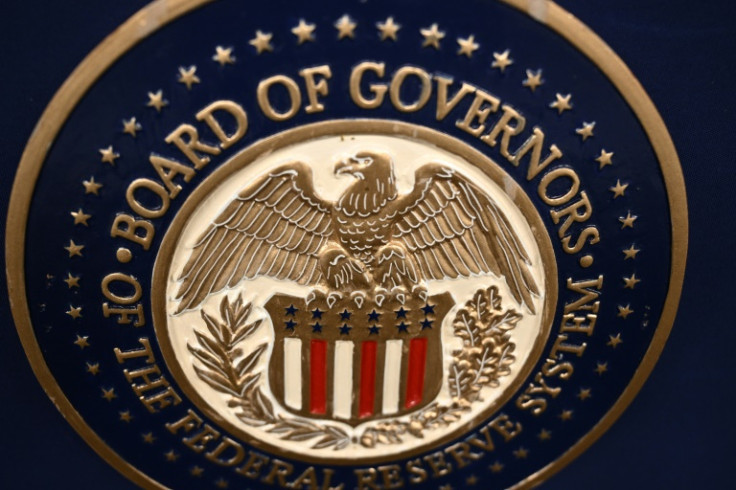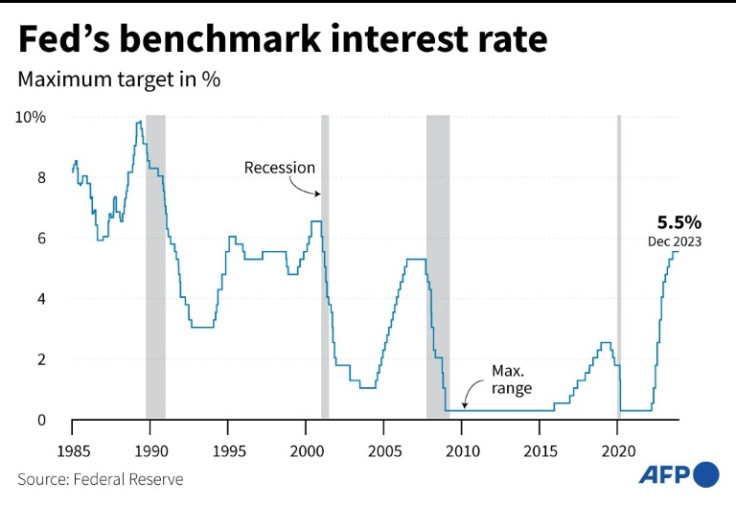US Fed Rate Cuts Become Question Of When, Not If
The US Federal Reserve is widely expected to start cutting interest rates in the coming months, as inflation edges closer to its long-run target of two percent.

The US Federal Reserve is widely expected to start cutting interest rates in the coming months, as inflation edges closer to its long-run target of two percent.
What is less clear, however, is when the first of those cuts will come.
While the US central bank is almost certain to announce it is holding its key lending rate steady at its next rate decision on Wednesday, analysts think it could also drop some more hints that cuts are coming.
In economic forecasts published alongside the last Fed decision, policymakers indicated that they expect as many as three quarter percentage-point rate cuts this year -- although they did not indicate when they might begin.

During a press conference after the rate decision was announced, Fed Chair Jerome Powell said policymakers had even discussed when it would be "appropriate" for the Fed to begin cutting interest rates, without providing any additional details.
Divisions have opened up between analysts and traders who believe the Fed's rate-setting committee will start cutting rates in March, and those who think a move later in the year would make more sense.
"If we are right on our outlook for a rate cut in March, it is likely because a majority of participants focus on more aggregated measures of inflation than specific components," Bank of America economists wrote in a recent investor note.
Meanwhile, Wells Fargo chief economist Jay Bryson told AFP Friday that recent inflation data is keeping hopes of a March cut "live," but added: "I still think that's a little bit premature."
"There may be some members who are willing to contemplate rate cuts as soon as March, I just don't think you can get a supermajority to agree to that," he said in an interview.
Recent economic data showed that growth in the United States reached 2.5 percent in the year to December, underscoring the enduring, unexpected strength of the world's biggest economy.
In more good news, the Fed's favored measure of inflation has dipped below three percent, and the unemployment rate has hugged close to record lows -- raising expectations the United States can bring down inflation without causing a recession.
The Fed has a mandate to act independently of the US Congress, but its upcoming decisions will nevertheless be closely parsed by politicians on both sides of the aisle.
That's because 2024 is a presidential election year, with a likely rematch in the cards between President Joe Biden and his predecessor Donald Trump.

Fed interest rate cuts can help reduce the cost of consumer loans, making everything from cars to mortgages more affordable for millions of households.
The Biden administration is hoping that growing consumer confidence in the economy will translate into more votes for Democrats, while Republicans are betting that unhappiness over historical inflation could cause voters to turn to them instead.
Fed officials have used recent public remarks to indicate support for a more cautious approach to cutting interest rates than the financial markets were predicting immediately after December's rate decision.
At the time, traders were pricing in six 25 basis point interest rate cuts for 2024, with the first of them arriving in March.
San Francisco Fed president Mary Daly, who sits on the Fed's rate-setting committee, said earlier this month that she thought it was "premature" to think rate cuts were just around the corner.
"We are fully committed to restoring price stability and doing it of course as gently as we can, but we have a lot of work left to do," Daly told Fox Business.
"We are not there yet, and it's far too early to declare victory," she added.
"If we continue to see a further accumulation of downside surprises in the data, it's possible for me to get comfortable enough to advocate normalization sooner than the third quarter," Atlanta Fed president Raphael Bostic said earlier this month.
"But the evidence would need to be convincing," added Bostic, who is also a voting member of the Fed's rate-setting committee this year.
Futures traders now expect at least five rate cuts this year, assigning a probability of almost 90 percent to a first cut by the May interest rate decision, according to an AFP analysis of CME Group data.
© Copyright AFP 2025. All rights reserved.


















